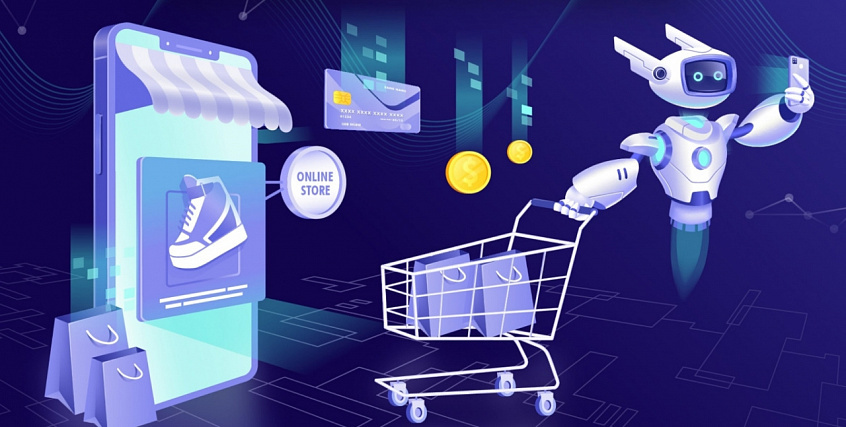Running an online store might sound like a dream job, even until you’re knee-deep in customer emails, out-of-stock products, and endless late-night order tracking. It’s not all sunshine and sales, especially when you’re doing everything manually. That kind of hustle gets old fast. You spend hours updating product listings, checking inventory, answering questions, fixing errors… and then you realize you haven’t even touched your marketing yet. Honestly, it’s kind of overwhelming. That’s where things start to shift, and fast, when you bring automation and AI into the mix. Now, this isn’t some “tech will save the world” speech. It’s real talk. Tools exist right now that let you stop doing the same tasks over and over. Automation handles the repeat work, the email replies, the shipping updates, the abandoned cart nudges. And AI? It learns how your customers think and helps you sell smarter, not harder. This stuff used to be expensive or only available to giant companies. Not anymore. It’s accessible. And if you’re running an e-commerce business today, it might just be the smartest upgrade you can make.
Understanding What E-commerce Automation Means
Let’s break this down simply. E-commerce automation is about removing the repetitive stuff from your plate. You know, the emails, the shipping alerts, tagging new orders, restocking notices. It’s all the little things that eat up your time and energy. Instead of you manually sending emails to every new customer, you set up a workflow once, and it runs in the background forever. Boom — hours saved every week. Even small actions—like sending out birthday discount codes, notifying your team when an order needs review, or thanking someone for leaving a review—can all be done automatically. That means fewer missed steps, faster service, and more time to focus on the parts of your business that need your brain, not your mouse clicks.
Where AI Fits In, And Why It’s Not Just Hype
Here’s the thing: automation follows rules. But AI? It learns patterns and makes decisions.
AI tools can analyze how people move through your site. Let’s say a customer clicks on three red shoes, then bounces. AI can send them a follow-up email with a discount on red shoes, or recommend a few similar items immediately. That’s not just helpful — that’s smart selling.
It can also:
- Predict what products are about to trend
- Help you optimize your pricing based on demand and inventory
- Offer personalized recommendations in real-time
- Power chatbots that sound and feel almost human
It’s not science fiction. It’s what smart stores are doing right now — quietly converting visitors into buyers with tools that get smarter every single day.
Why Automation Matters More Than Ever
Let’s be real — competition in e-commerce is brutal. Everyone’s selling something, and customers don’t stick around for stores that feel slow or outdated.
If someone buys a product and doesn’t get an email confirmation in 10 seconds? They’re nervous. If tracking details aren’t sent out within a few hours? They’re frustrated. Your speed matters. Your systems matter. That’s where ecommerce automation comes in — it keeps things moving, even when you’re not online. You go from feeling behind to being ahead. It doesn’t just help you manage — it helps you scale. You start to notice fewer errors, faster support replies, better inventory sync, and happier reviews. And it happens without adding stress or needing to work around the clock.
Starting Small Is Totally Fine
You don’t have to go full robot mode overnight. In fact, you shouldn’t.
Start with a few simple automations:
- Set up an automated welcome email for new subscribers.
- Use a tool like Shopify Flow or Zapier to automate low stock alerts.
- Try an AI chatbot like Tidio or ManyChat to handle FAQs.
That’s it. Those three alone can save you hours every week. And once you see how smoothly things run, you’ll start exploring more, maybe syncing your orders with suppliers, or using AI to write product descriptions.
The point is, once you get started, you’ll realize it’s not as technical as it sounds. And the benefits come faster than you expect.
Conclusion
Let’s be completely honest — if you’re still trying to run every part of your online store by hand, it’s only a matter of time before you hit a wall. You might get by for a while, but growth will be slow, burnout will creep in, and mistakes will start costing you. Automation and AI aren’t just trends — they’re tools. Tools that help you do more with less effort. Tools that let you be a better store owner, without needing to be glued to your laptop 24/7. And no, you don’t need to know how to code. You just need to take that first step. Automate one thing. Test one tool. Learn what’s out there. It’s not about removing the human touch — it’s about giving you more time to be human where it counts: in your ideas, your brand, your service. The stores that thrive in today’s market are the ones that work smarter, not harder. So, if you’ve been thinking about making the shift, now’s the time. The tools are ready. The only question is, are you?



